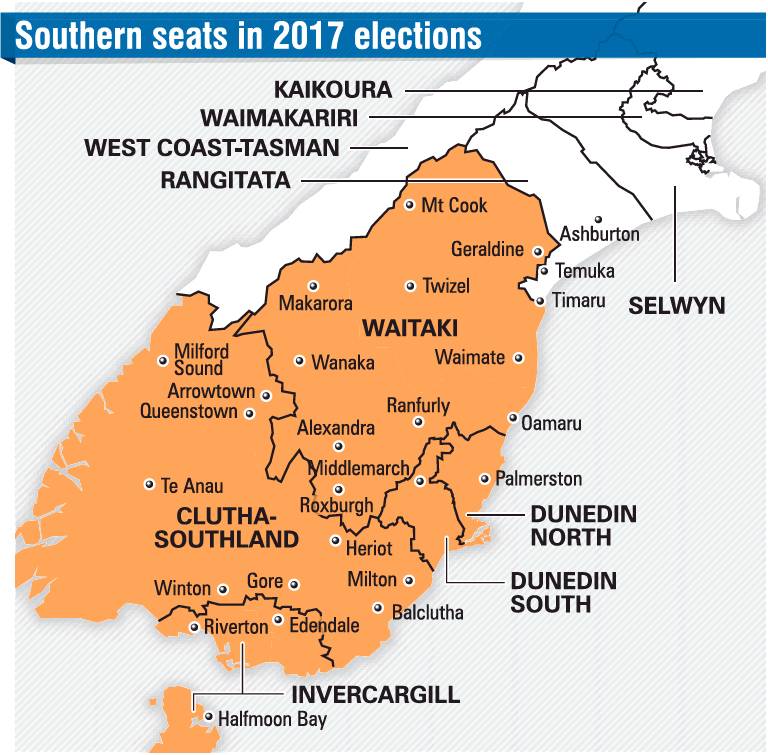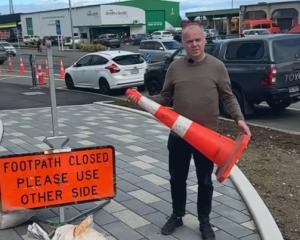
While the 2020 election might seem a long way away, it is not ... and the framework for the next contest of ideas is already being drawn up.
You will not be surprised to learn there is already controversy, before anything has actually happened.
This month, the Representation Commission will be brought out of cryogenic suspension and revived to consider the boundaries of New Zealand's electorates.
In the overall scheme of things, its decisions will matter very little.
In our MMP electoral system it is the proportion of party votes the parties receive - and whether they clear the 5% threshold - which dictates how many seats they have in Parliament, be they electorate or list seats.
Also, there are very few truly marginal electorates in New Zealand.

The seven smallest majorities in New Zealand's seats range from 1039 to 1719 and in every other seat the current MP has a 2000-plus vote margin.
Electorate seats are not without consequence, though.
Most obviously, without his Epsom seat, David Seymour would be back being a policy adviser rather than serving as Act New Zealand's flickering ember.
Less tangibly, while electorate races may be almost non-existent, the illusion of one is an important part of rallying local political activists to the cause every three years.
But to have an electorate race you need an electorate, which is where the Representation Commission comes in.
Its first task is to take data from the 2018 Census, and roughly apportion New Zealand into electorates of approximately equal population, before setting the final boundaries.
And that is why there is already shouting, which is only going to get more shrill in the weeks ahead.
The debacle which was the 2018 Census has already claimed the job of the Government's chief statistician: just like baseball records from the steroid abuse era, statistics from the 2018 Census should have an asterisk appended to them, as a warning of their questionable validity.
National has already cautioned it would regard moving any electorate boundaries on the basis of the 2018 Census figures as being highly dubious ... let alone any new seats being created.

There are roughly 60,000 people in each South Island electorate, and some creative cartography is needed to achieve that - most notably for Waitaki and Clutha Southland, which stretch west and north to the Lakes District to push them towards the requisite numbers.
This requires a rethink, surely.
Among the factors the commission must consider when drawing electorate boundaries are "communities of interest" and topographical features.
It is debatable if the community interests of Gore are those of Queenstown.
Oamaru, approximately, is as far from Wanaka as Auckland is from Tauranga.
There is a reason why Clutha Southland MP Hamish Walker and Waitaki MP Jacqui Dean have high travel expenses.
It costs that much to get around and represent some of the country's largest electorates.
There seems little chance an extra southern seat will be recommended.
For that to happen section 35 of the Electoral Act, which dictates the South Island must have 16 electorates, would need to be altered.
That would be no small task. Section 35 is one of the few clauses in the Electoral Act which requires a 75% majority to amend it and an already grumpy National would need to be cajoled to vote in favour.
The alternative to a new seat would be a drastic and inevitably controversial redrawing of the map to create a "Lakes" electorate.
You could either divvy up Clutha-Southland between "Lakes", Invercargill and Dunedin South; apportion Waitaki into "Lakes", Dunedin North and Rangitata; or merge Rangitata with Waitaki and have a "Lakes" seat with considerable territory to its east to make up the numbers.
Given the uncertainty over the Census, leaving things exactly as they are is the path of least resistance, but it also postpones the inevitable.
The Queenstown Lakes District Council puts the resident population of the region at just under 40,000.

If a new seat is not created in the Lakes region now, at that rate of growth it will need to be created soon.
The boundary review is due to be completed by April 2020, and its new borders to be used in the 2020 and 2023 elections.
Even if the controversy over the Census is too high a hurdle for the Representation Commission of 2019 to overcome, these are questions its next iteration will surely have no choice but to face head-on.
Oh, but you said
Having just said there were not really any marginal seats in New Zealand, where the southern border of Dunedin South ends up being drawn will be of great interest to those vying for Clare Curran's imminently vacant seat.
It is not beyond the realms of possibility that the boundary might be extended down to Milton, a town where National comfortably outperformed Labour in 2017.
Add Mosgiel's burgeoning population, bearing in mind that Labour won only one polling booth in the township last election, and Dunedin South might be worth a close watch in 2020.
Comments
It would be pretty hard to argue against an electorate comprising 60,000 centred on Cromwell. That's Queenstown Lakes and most of Central Otago. Very strong community of interest and the economic powerhouse of the region.
Bring it on.











